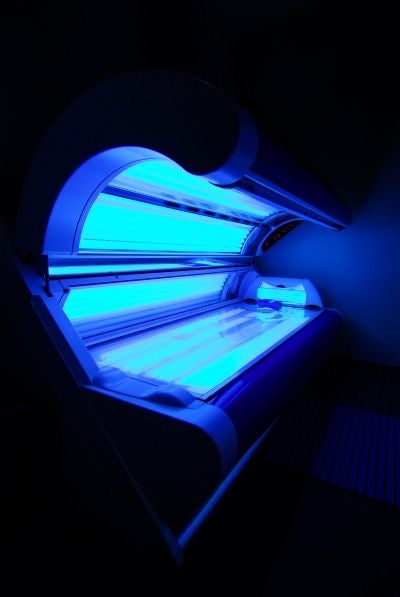Can tanning be addictive? New research says yes, and that those who regularly use tanning beds may experience changes in their brain activity similar to those triggered by drug addiction. Meaning, despite the risks for skin cancer and premature aging, they keep going back for more.
Scientists have long suspected that frequent exposure to UV radiation can become addictive, but new research announced last week is the first to "peer inside the brains of people as they lay in tanning beds," reported The New York Times.
"Using tanning beds has rewarding effects in the brain so people may feel compelled to persist in the behavior even though it's bad for them," said Dr. Bryon Adinoff, senior author of the study and professor at the University of Texas Southwestern Medical Center in Dallas. "The implication is, 'If it's rewarding, then could it also be addictive?'"
The findings, which appear online in the journal Addiction Biology, revealed that brain activity and corresponding blood flow in those using tanning beds is similar to that seen in people addicted to drugs or alcohol, suggesting its addictive quality. The research follows another cited by The New York Times that in 2005 found that many sunbathers "met the psychiatric definition of a substance abuse disorder," based on answers to a test.
Past research has shown that indoor tanning increases the risk of melanoma, the deadliest form of skin cancer, by 75 percent. Talk to your dermatologist about your UV exposure risks, wear sunscreen, and avoid tanning beds.
If you enjoy being bronze, try a UV-free tanner, available in creams or sprays. If you want to find a safer, environmentally friendly sunless tanner, look to the Environmental Working Goup's (EWG) cosmetic safety database Skin Deep.

Join our commenting forum
Join thought-provoking conversations, follow other Independent readers and see their replies
Comments